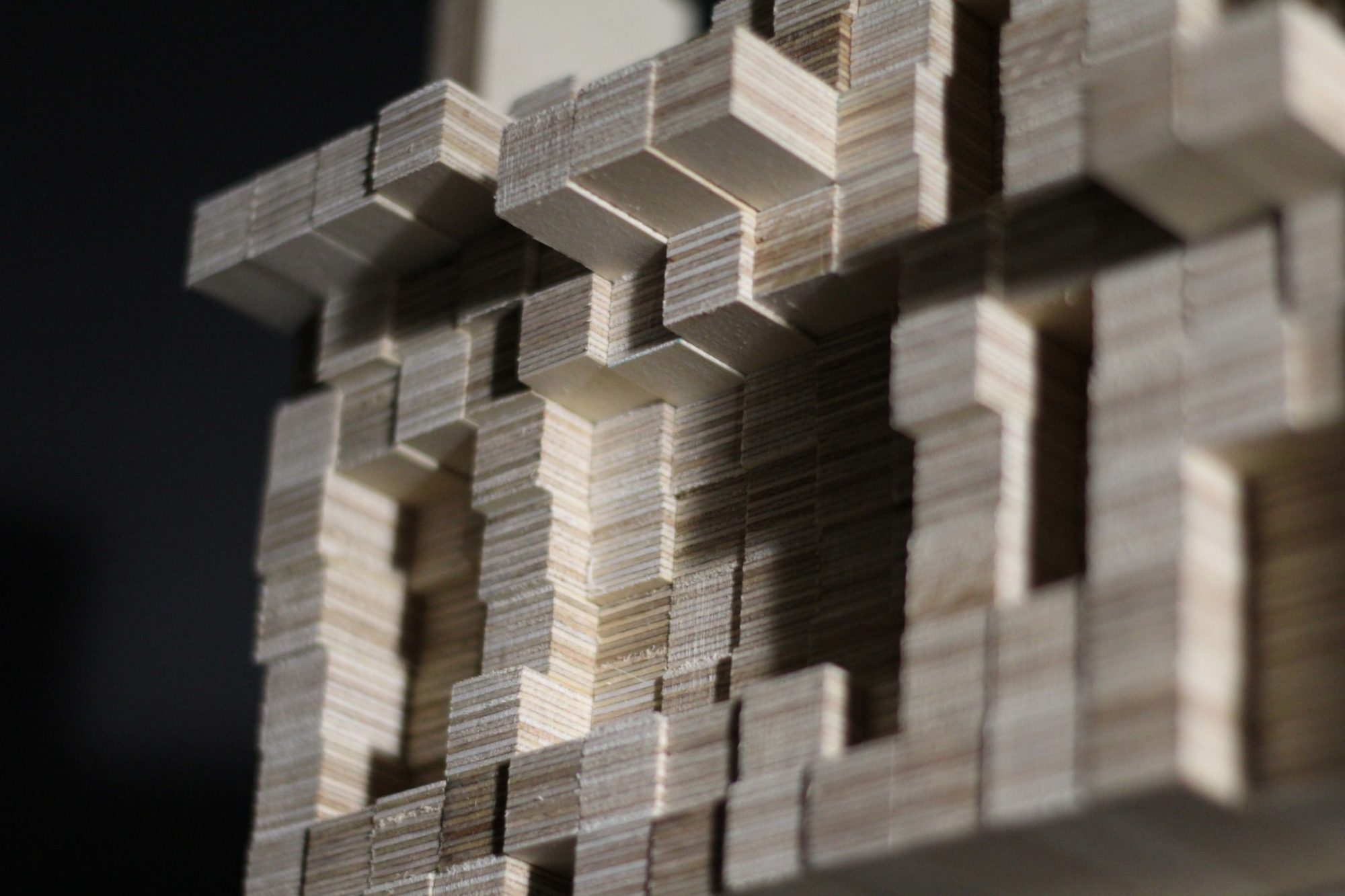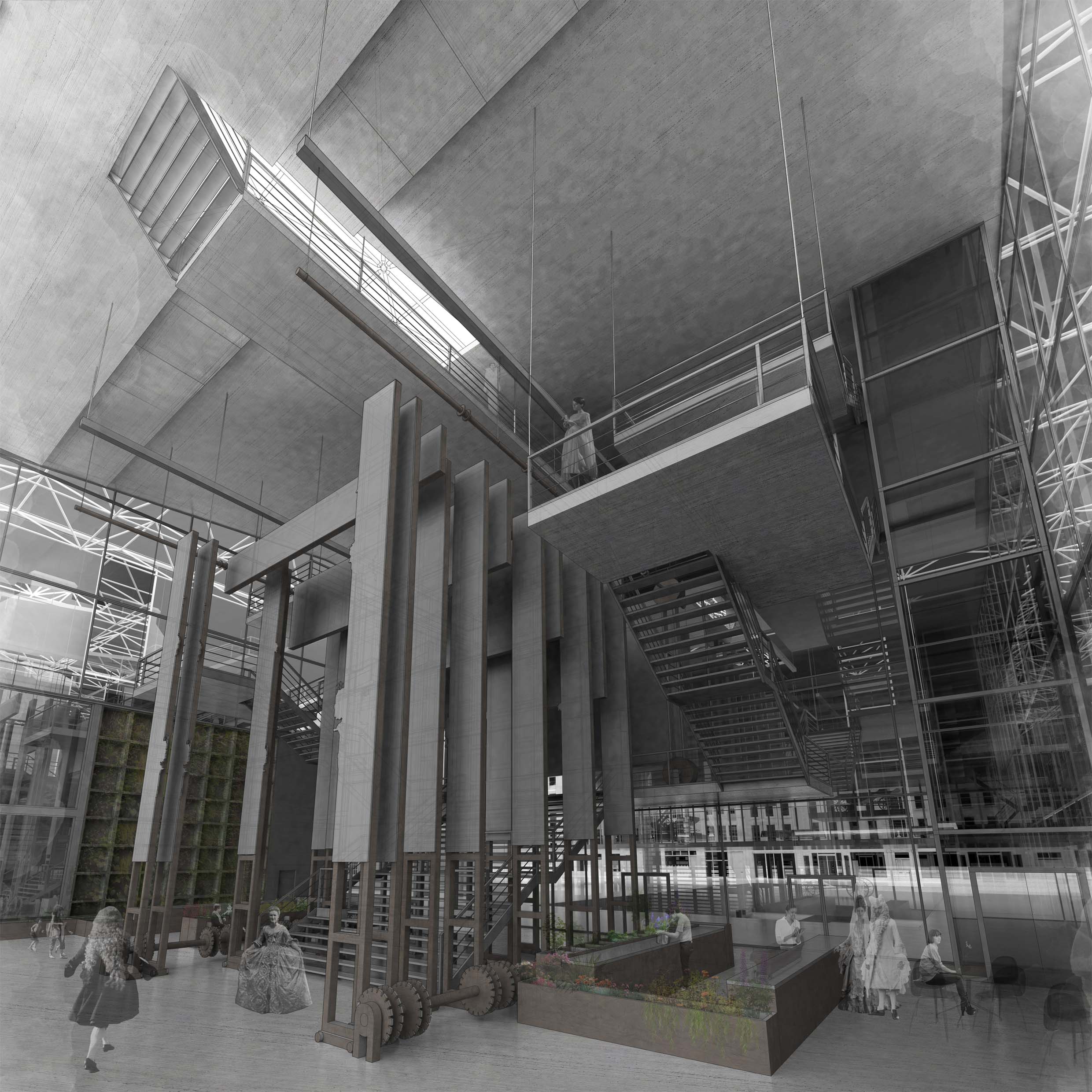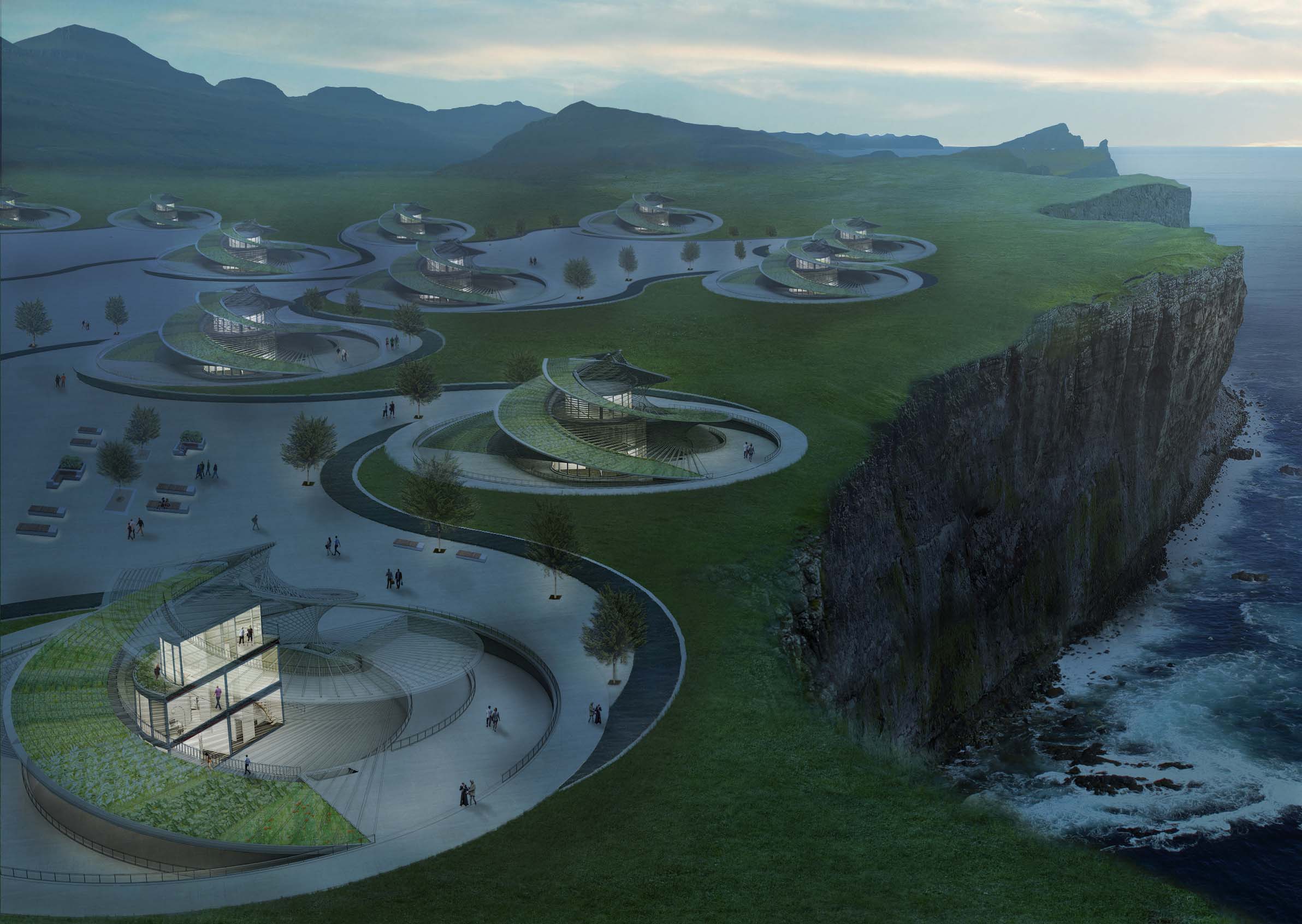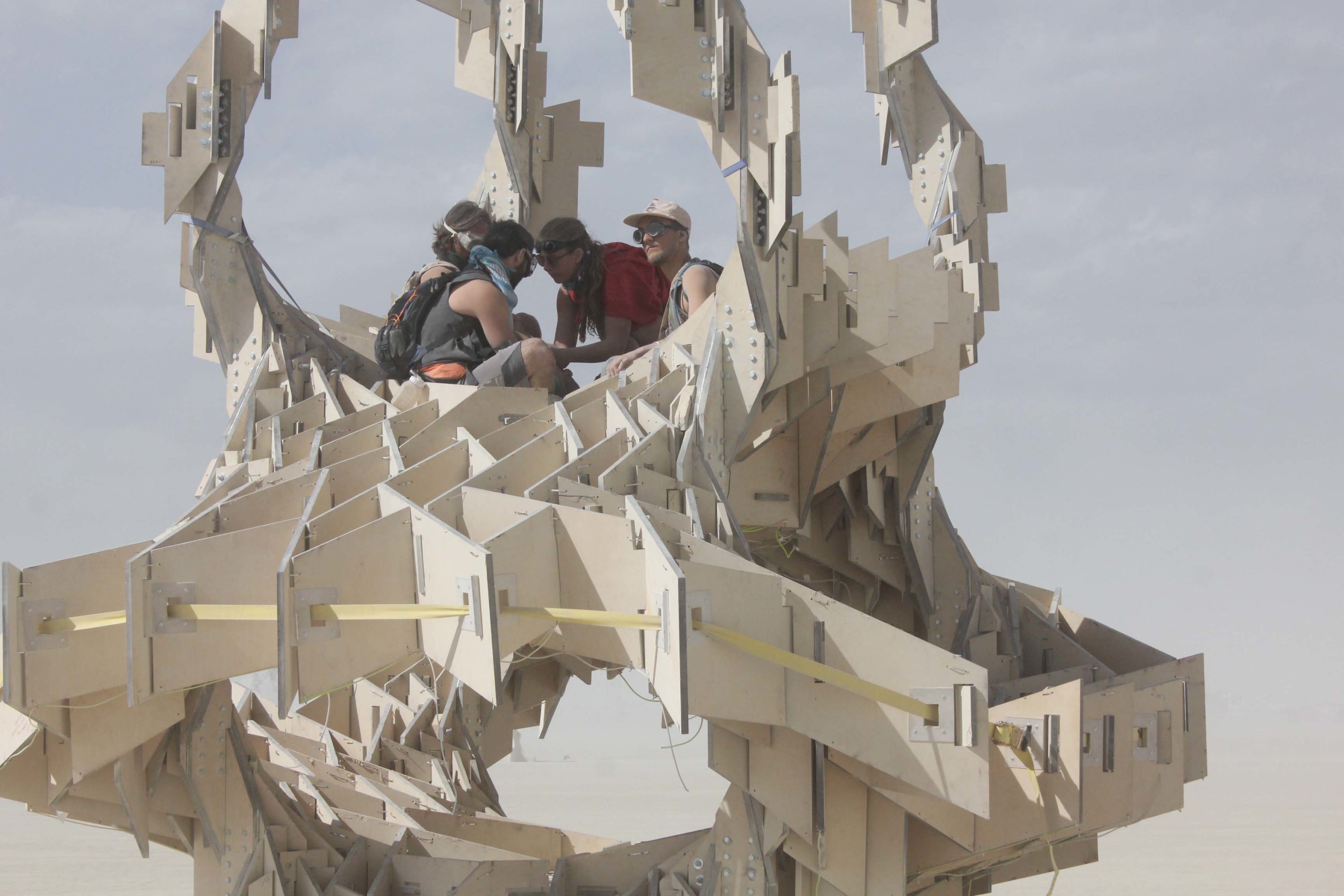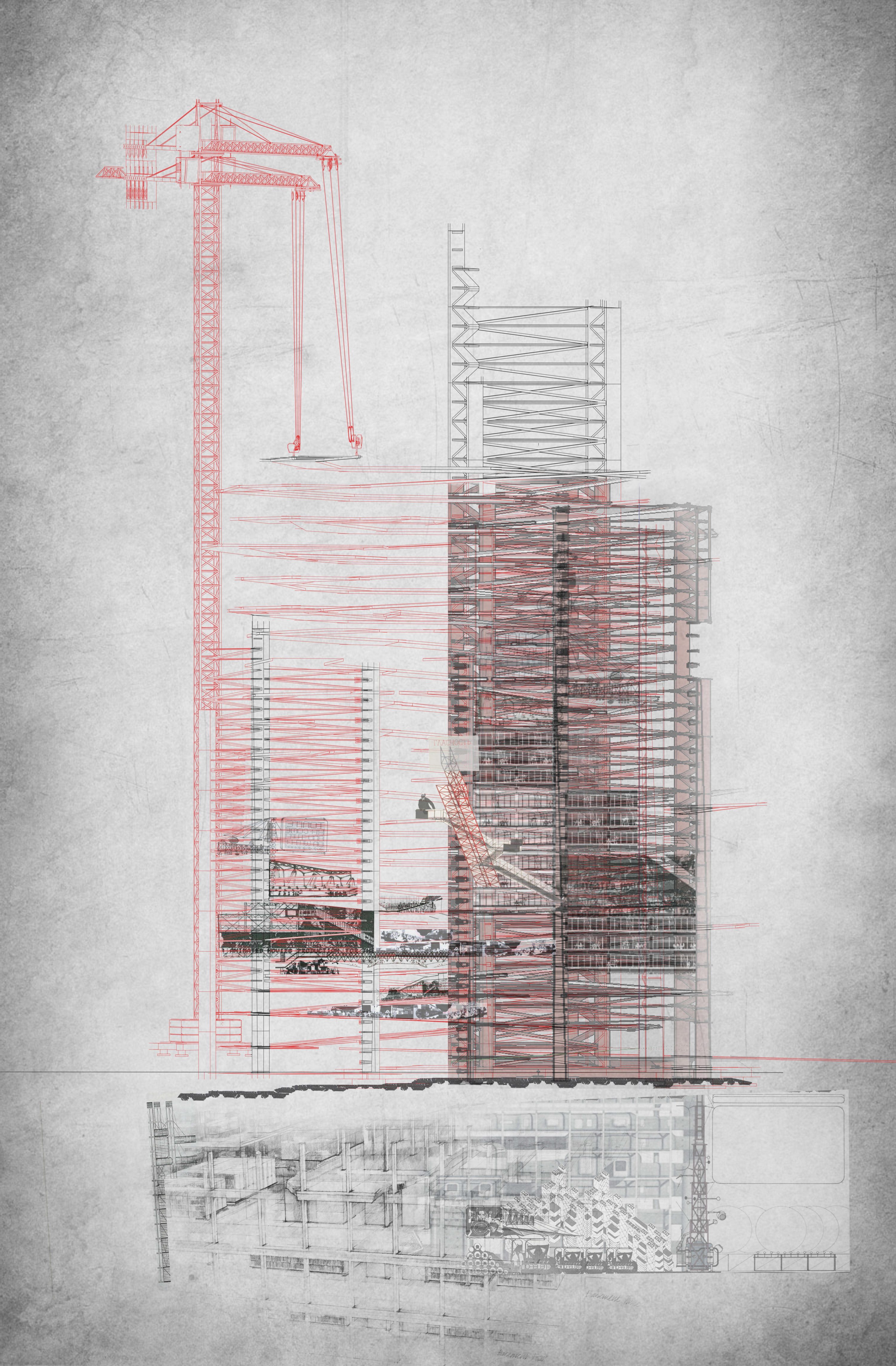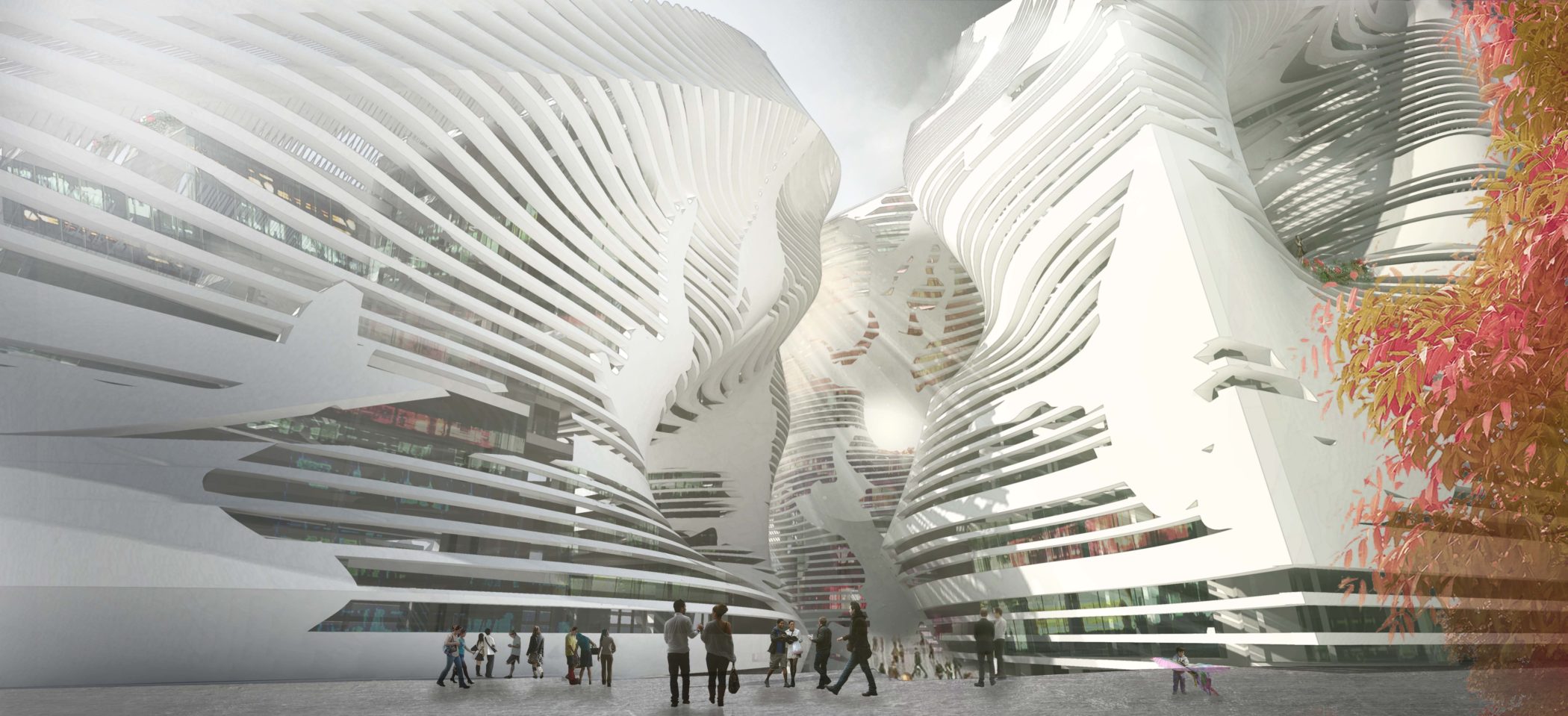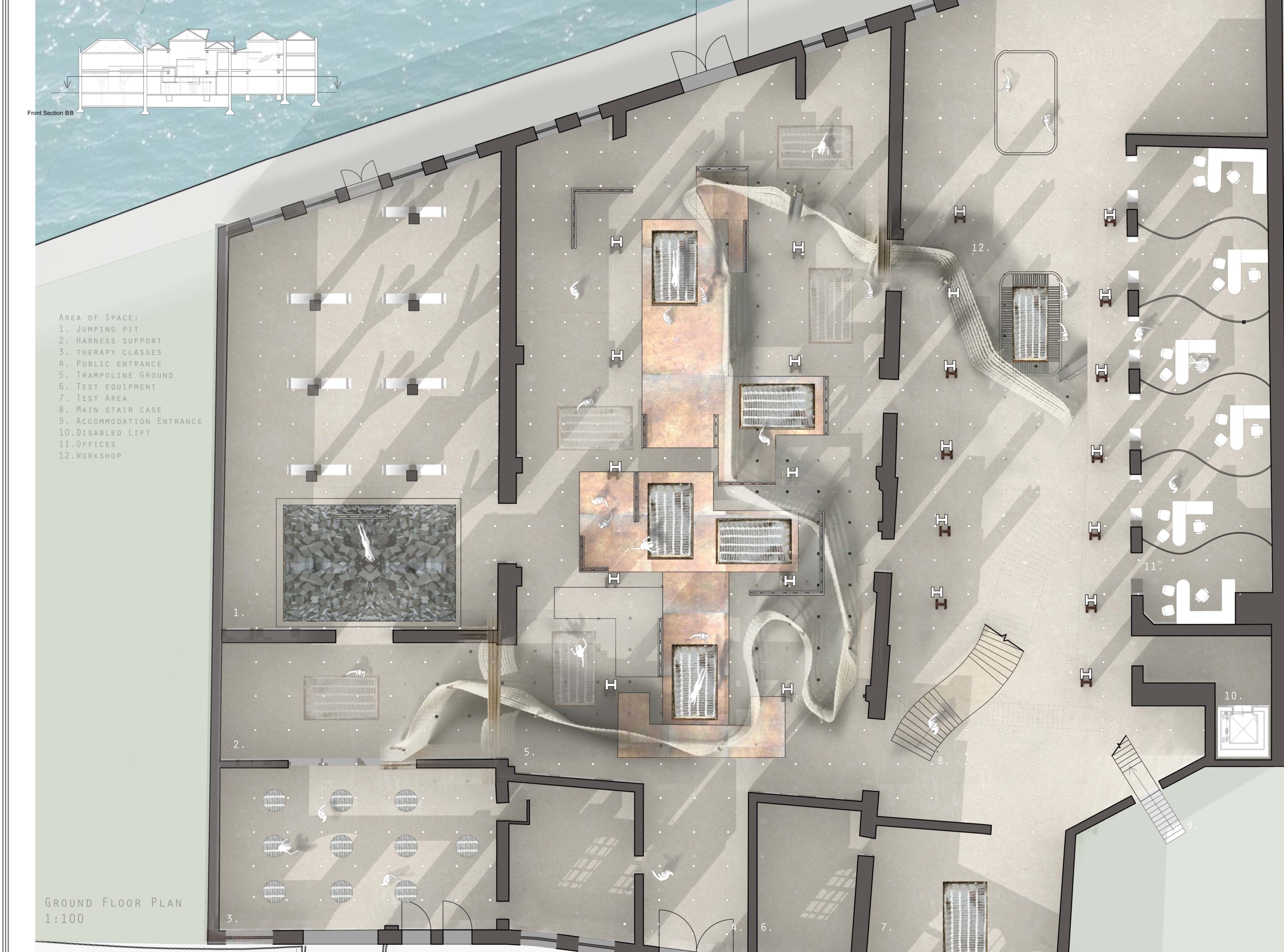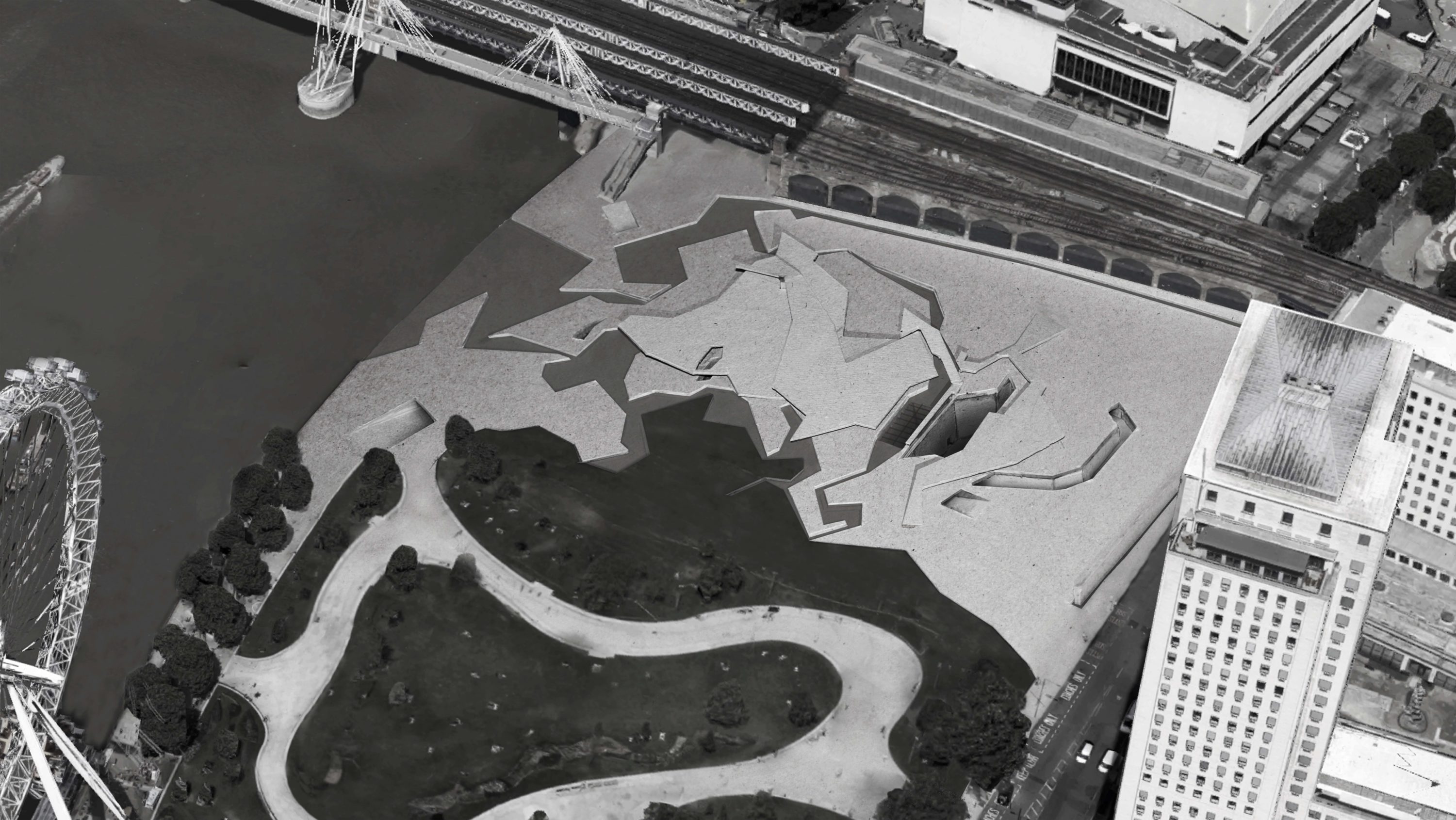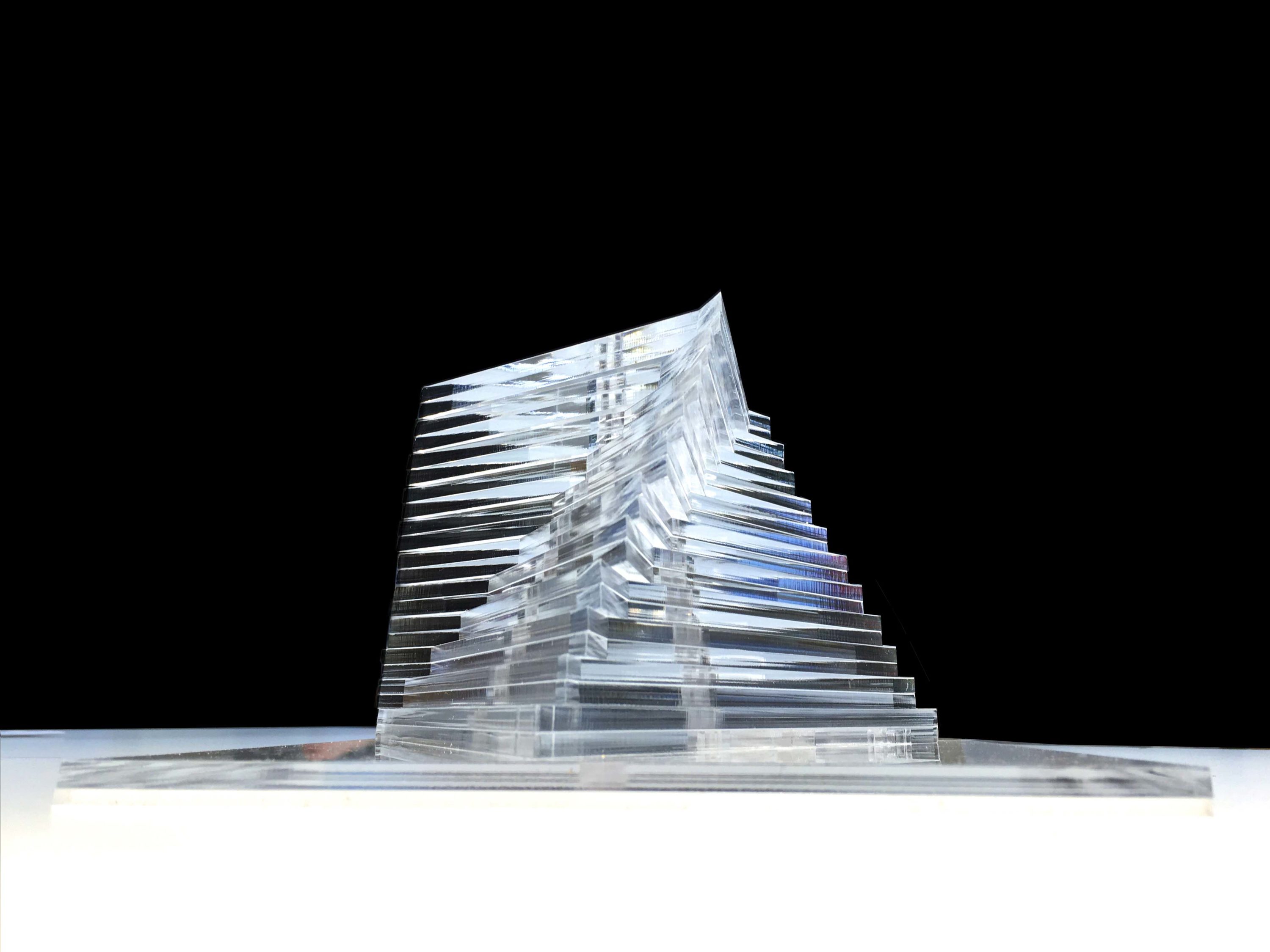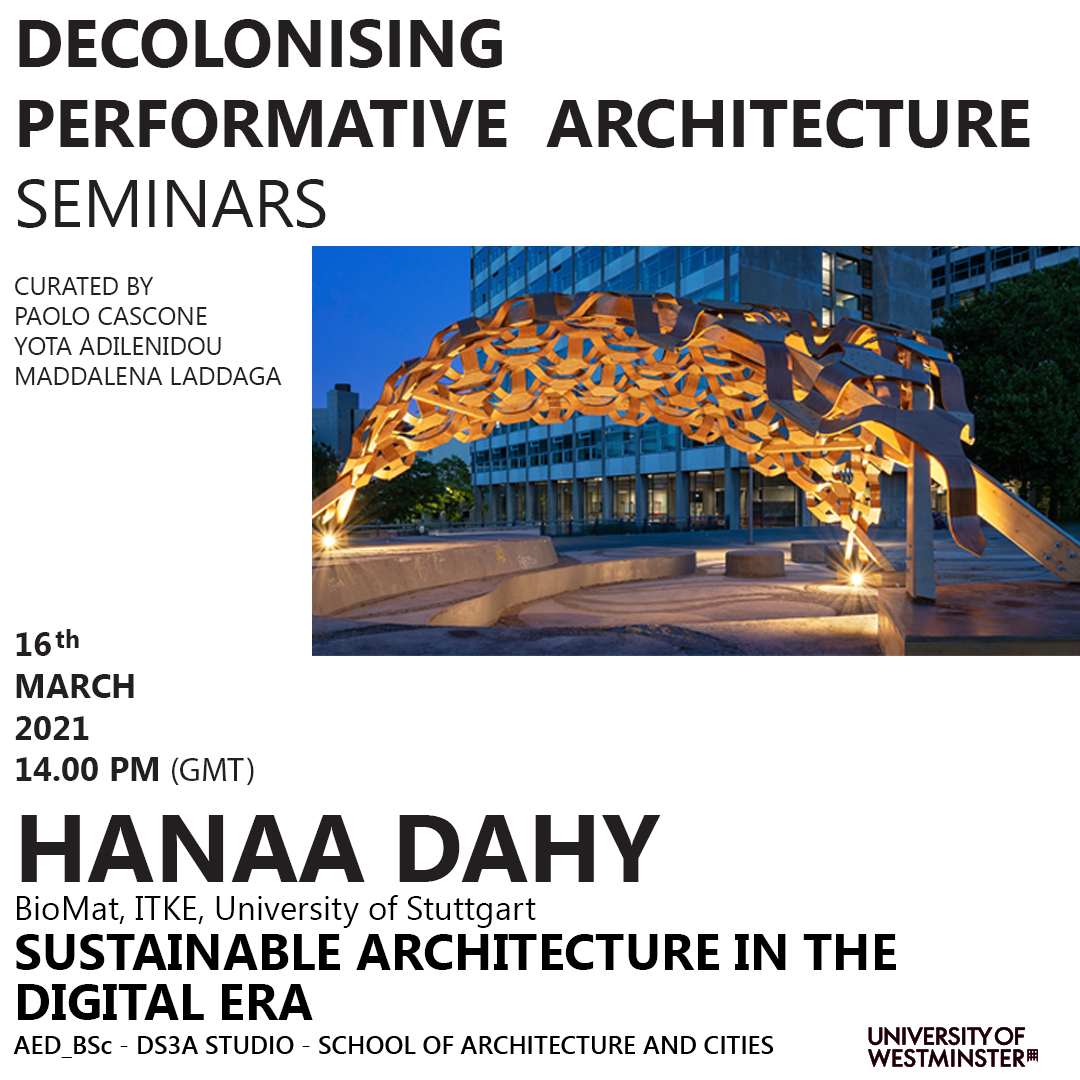When: Tuesday, 16th of March at 2.00pm GMT
Blackboard link: https://eu.bbcollab.com/guest/a1f67e76494344a3ba9b0a002be29c38
The seminar is organised by Paolo Cascone, Yota Adilenidou and Maddalena Laddaga in the frame of Architecture and Environmental Design DS3A “Decolonising Performative Architecture” seminar series.
Hanaa Dahy is a registered architect, engineer and material developer who established in the frame of her professorship the research department BioMat (Bio-based Materials and Materials Cycles in Architecture) as a Junior Professor at ITKE (Institute for Building Structures and Structural Design) since July 2016 at the Faculty of Architecture and Urban Planning in the University of Stuttgart. She earned her PHD from ITKE in Stuttgart in 2014 with Excellence and earned her Bachelors and Master Degree in ‘Architectural Engineering’ in 2003, 2006 respectively from Ain Shams University in Cairo with Honors. Hanaa developed, designed and manufactured a number of innovative sustainable building products that were widely presented in international exhibitions and attracted a lot of industrial interests. Among other research areas, she is particularly interested in biomimetic principles, sustainability and their impact on architectural practice and applications. She has pending European and international patents, earned the best of Materials and Design award (Materialica) in Munich in 2015 and the Material Prize award (MaterialPreis) in 2016 from the Design Center of the state Baden-Württemberg in Germany, a fellowship for the innovation of university-teaching in 2017, a number of research/industrial project funds and is a member of a number of European and international scientific and professional bodies. Her teaching and training are in the area of architectural design, composites, structure and materials, smart systems, fabrication and biomimetics
